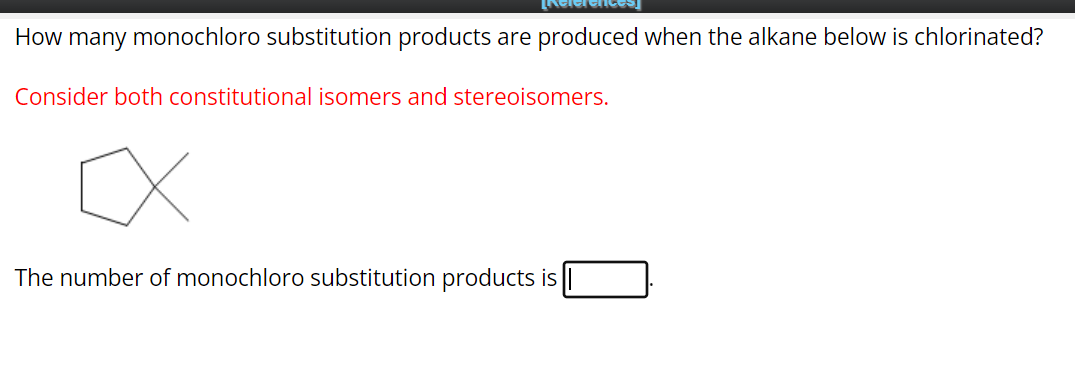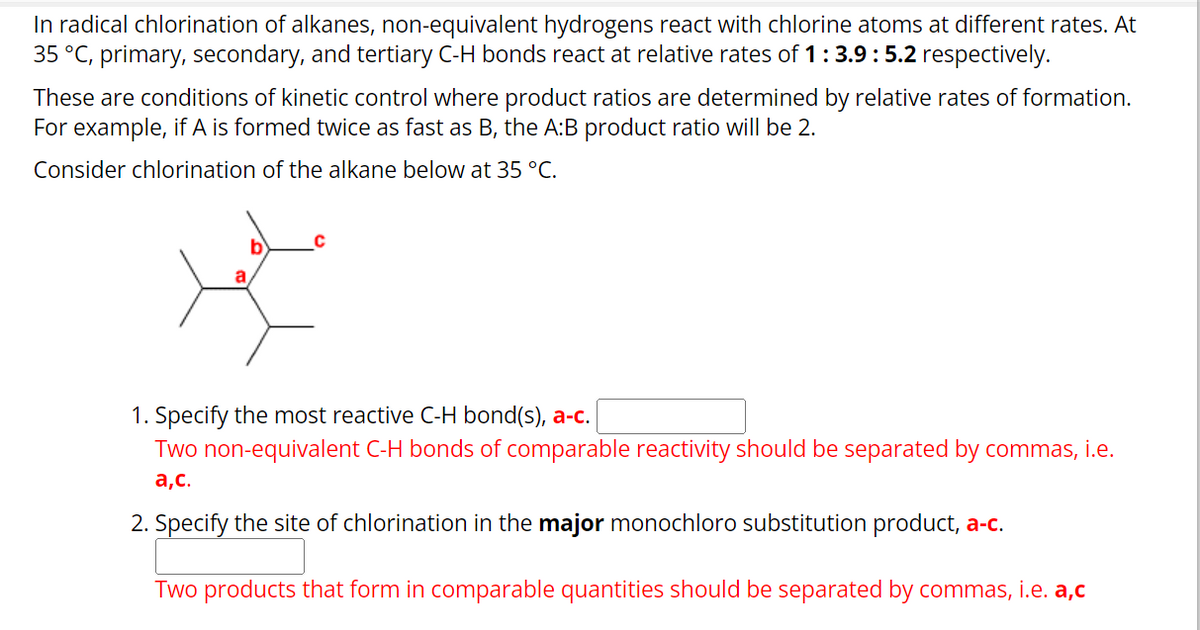[ReferencEIJ How many monochloro substitution products are produced when the alkane below is chlorinated? Consider both constitutional isomers and stereoisomers. The number of monochloro substitution products is
[ReferencEIJ How many monochloro substitution products are produced when the alkane below is chlorinated? Consider both constitutional isomers and stereoisomers. The number of monochloro substitution products is
Chapter3: Organic Compounds: Alkanes And Their Stereochemistry
Section3.SE: Something Extra
Problem 54AP: In the next chapter we'll look at cycloalkanes—saturated cyclic hydrocarbons—and we’ll see...
Related questions
Question
pls help, i am stuck on this question for an assigment

Transcribed Image Text:[Reference
How many monochloro substitution products are produced when the alkane below is chlorinated?
Consider both constitutional isomers and stereoisomers.
x
The number of monochloro substitution products is

Transcribed Image Text:In radical chlorination of alkanes, non-equivalent hydrogens react with chlorine atoms at different rates. At
35 °C, primary, secondary, and tertiary C-H bonds react at relative rates of 1 : 3.9 : 5.2 respectively.
These are conditions of kinetic control where product ratios are determined by relative rates of formation.
For example, if A is formed twice as fast as B, the A:B product ratio will be 2.
Consider chlorination of the alkane below at 35 °C.
a
C
1. Specify the most reactive C-H bond(s), a-c.
Two non-equivalent C-H bonds of comparable reactivity should be separated by commas, i.e.
a,c.
2. Specify the site of chlorination in the major monochloro substitution product, a-c.
Two products that form in comparable quantities should be separated by commas, i.e. a,c
Expert Solution
This question has been solved!
Explore an expertly crafted, step-by-step solution for a thorough understanding of key concepts.
Step by step
Solved in 3 steps with 1 images

Knowledge Booster
Learn more about
Need a deep-dive on the concept behind this application? Look no further. Learn more about this topic, chemistry and related others by exploring similar questions and additional content below.Recommended textbooks for you


Chemistry for Today: General, Organic, and Bioche…
Chemistry
ISBN:
9781305960060
Author:
Spencer L. Seager, Michael R. Slabaugh, Maren S. Hansen
Publisher:
Cengage Learning


Chemistry for Today: General, Organic, and Bioche…
Chemistry
ISBN:
9781305960060
Author:
Spencer L. Seager, Michael R. Slabaugh, Maren S. Hansen
Publisher:
Cengage Learning